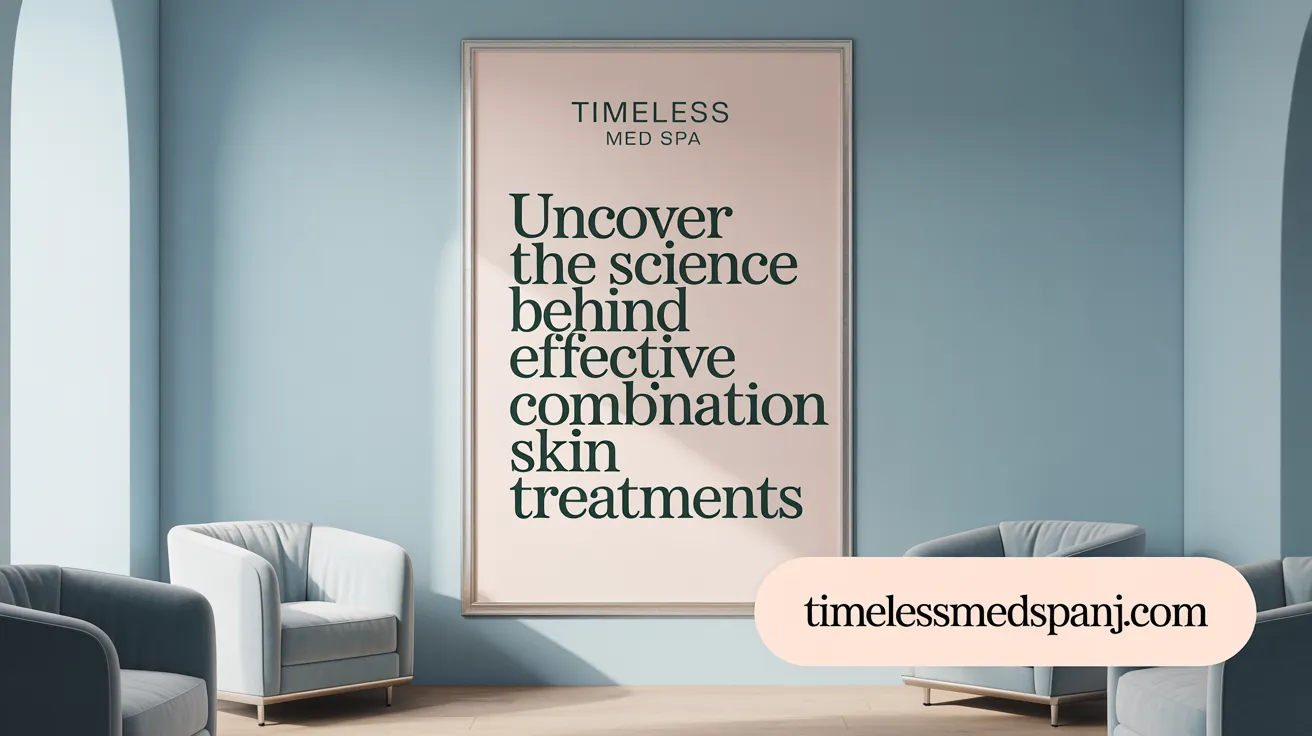Introduction to Multi-Modal Skin Rejuvenation
In the evolving field of aesthetic dermatology, combining multiple skin rejuvenation techniques promises superior outcomes by addressing the complex nature of skin aging comprehensively. Integrated approaches leverage the strengths of various treatments to improve skin texture, tone, volume, and elasticity, resulting in natural-looking, long-lasting rejuvenation. This article explores the principles, benefits, protocols, safety considerations, and latest innovations in combining skin rejuvenation therapies to optimize results and patient satisfaction.
Common Skin Rejuvenation Methods and Their Individual Effects

What are the common skin rejuvenation methods and their individual effects?
There are several popular skin rejuvenation treatments, each targeting different aspects of aging and skin damage. Chemical peels, ranging from superficial to deep, involve applying acids like glycolic or trichloroacetic acid to remove damaged outer skin layers. This stimulates collagen production, results in smoother, brighter skin, and is effective against fine lines, uneven pigmentation, and scarring.
Laser treatments are classified into ablative and non-ablative categories. Ablative lasers, such as CO2 and Er:YAG, physically vaporize damaged skin, leading to more dramatic improvements in wrinkles, scars, and skin tone, but with a longer recovery. Non-ablative lasers, like Fraxel or BBL, heat deeper skin layers without removing surface tissue, promoting collagen synthesis with minimal downtime.
Microneedling uses fine needles to create micro-injuries in the skin, triggering the body's healing response. This method effectively reduces scars, fine lines, and improves skin firmness, especially suited for skin laxity and textural issues, and usually involves quick recovery.
Injectable treatments such as Botox and dermal fillers address specific concerns. Botox relaxes facial muscles to smooth dynamic wrinkles, such as those across the forehead and around the eyes. Fillers, often hyaluronic acid-based, restore lost volume, define facial contours, and diminish static lines and hollows — providing immediate and natural-looking results.
Combining these approaches offers a comprehensive solution for various skin issues, allowing tailored treatment plans. Proper sun protection and skincare routines enhance the longevity and effectiveness of rejuvenation efforts, helping achieve a smoother, brighter, and more youthful complexion.
Principles and Benefits of Combining Multiple Skin Rejuvenation Techniques

What are the principles behind combining multiple skin rejuvenation techniques?
Combining skin rejuvenation treatments involves integrating various treatments that target different aspects of skin aging, such as wrinkles, volume loss, pigmentation, and texture. The core principle is to use complementary modalities—like laser therapy, chemical peels, microneedling, and injectable fillers—in a sequential or simultaneous manner, tailored to the individual's skin concerns.
This approach leverages the strengths of each treatment to achieve superior overall results. For instance, surface procedures like intense pulsed light (IPL) or chemical peels can improve skin tone and pigmentation, while deeper treatments like microneedling and laser resurfacing stimulate collagen production to combat wrinkles and laxity.
Effective combination therapy requires careful planning, considering the patient's skin type, severity of aging signs, and aesthetic goals. Customized protocols are designed to maximize safety and efficacy, ensuring that treatments support each other’s effects without increasing risks, as detailed in this guide on the dos and don’ts of combining aesthetic treatments.
By addressing multiple skin issues concurrently, practitioners can enhance skin quality, improve texture, and restore youthful resilience in a single comprehensive plan—often with shorter recovery periods and more natural results. This patient-centered approach relies on detailed assessment and evidence-based practices to optimize outcomes, supported by the latest research on combination aesthetic therapies.
What are the benefits of combining different skin rejuvenation methods?
The main advantage of combining skin rejuvenation treatments is achieving a holistic, more dramatic transformation than individual procedures could accomplish alone. This synergy results in several benefits:
- Comprehensive Results: Different modalities target distinct skin concerns—pigmentation, wrinkles, volume loss, and texture improvements—delivering an all-encompassing rejuvenation, as explained in a comprehensive review on skin resurfacing and rejuvenation.
- Enhanced Effectiveness: Stimulating collagen at various skin depths amplifies anti-aging effects, improving skin firmness and elasticity for longer-lasting benefits, shown by studies on multi-modal laser resurfacing treatments.
- Minimized Downtime: Utilizing less invasive treatments in combination allows for effective outcomes with shorter recovery periods, as each modality complements the other’s action—a concept discussed in articles about layering treatments for dramatic and natural results.
- Personalized Care: Combining treatments creates a tailored approach based on individual skin conditions, ensuring precise addressing of unique aesthetic goals, as emphasized by leading dermatology protocols.
- Cost & Time Efficiency: Multiple concerns can be treated in fewer sessions, reducing overall treatment time and minimizing travel or clinic visits, improving patient satisfaction as seen in studies on combined treatments and patient outcomes.
Overall, a combination of advanced therapies provides a balanced, natural look, boosts patient satisfaction, and promotes healthier, more resilient skin, making it an essential strategy in modern dermatology and aesthetic medicine. For further understanding, see this detailed discussion on the benefits of combining treatments for optimal results.
Enhancing Skin Health and Appearance with Integrated Treatments

How can integrated skin treatments improve both appearance and skin health?
Combining various skin rejuvenation treatments and professional-grade medical-grade skin care products creates a comprehensive approach that benefits both the look and vitality of the skin. These integrated treatments target multiple layers and issues of the skin simultaneously, stimulating collagen production, improving hydration, and reducing pigmentation and imperfections.
For example, procedures like chemical peels, microneedling, and laser therapy work together to resurface the skin, smooth fine lines, and address discoloration. When paired with high-quality skincare products containing antioxidants, peptides, and growth factors, the skin’s resilience and barrier function are enhanced, leading to a healthier, more radiant complexion.
Professional skincare routines with medical-grade products are designed to support ongoing skin regeneration and protection. They often include broad-spectrum sunscreens, retinoids, and nourishing serums that help prolong treatment results and prevent future damage.
This holistic approach not only delivers immediate cosmetic improvements but also fortifies the skin’s foundation. It promotes better hydration, elasticity, and pigmentation balance, ensuring long-term skin health. Patients enjoy a natural, youthful glow that is sustainable, with minimized downtime and reduced risk of adverse effects.
In essence, the synergistic effect of combining clinical procedures with tailored skincare routines empowers the skin to heal, renew, and maintain its optimal appearance and resilience over time.
Safety and Strategic Protocols in Combining Aesthetic Skin Treatments

What safety considerations should be taken when combining aesthetic skin treatments?
When performing combined aesthetic skin treatments, safety must be a primary concern. Clinicians should begin with a thorough assessment of each patient’s medical history, skin type, and previous aesthetic procedures to identify any contraindications or risks such as allergies, skin sensitivities, or underlying health conditions.
Understanding how different treatments interact is essential. For instance, combining treatments that cause skin inflammation, like chemical peels or ablative lasers, with other procedures requires caution to avoid excessive irritation or delayed healing. Proper sequencing is crucial; typically, treatments that stimulate collagen and skin renewal are scheduled with sufficient intervals—usually at least one to two weeks apart—to allow the skin to recover and reduce the risk of adverse reactions such as swelling, pigmentation changes, or nodules.
Moreover, practitioners must stay informed about the latest evidence-based protocols and safety guidelines. Continuous professional education ensures they understand new techniques and potential interactions, which helps in customizing safe, effective treatment plans.
Patient communication plays a vital role—transparently discussing potential risks, realistic outcomes, and post-treatment care fosters trust and compliance. Monitoring during and after treatment allows early detection and management of side effects, such as erythema, prolonged redness, or unexpected reactions.
In essence, meticulous planning, ongoing education, and clear communication collectively ensure that combining aesthetic skin treatments is both safe and successful, delivering benefits while safeguarding patient health.
Outcomes and Efficacy of Multi-Modal Skin Rejuvenation Strategies
 Multi-modal skin rejuvenation strategies significantly enhance treatment outcomes by simultaneously targeting multiple layers and concerns of the skin. These combined approaches can include a variety of treatment modalities such as injectables—including hyaluronic acid fillers and calcium hydroxylapatite (CaHA)—energy-based devices like micro-focused ultrasound (MFU-V), radiofrequency (RF), and fractional laser technologies, as well as botulinum toxins. The synergy among these treatments promotes collagen and elastin production, resulting in firmer, more elastic skin (Combination therapy for skin tightening, Facial rejuvenation procedures, Combination aesthetic therapies).
Multi-modal skin rejuvenation strategies significantly enhance treatment outcomes by simultaneously targeting multiple layers and concerns of the skin. These combined approaches can include a variety of treatment modalities such as injectables—including hyaluronic acid fillers and calcium hydroxylapatite (CaHA)—energy-based devices like micro-focused ultrasound (MFU-V), radiofrequency (RF), and fractional laser technologies, as well as botulinum toxins. The synergy among these treatments promotes collagen and elastin production, resulting in firmer, more elastic skin (Combination therapy for skin tightening, Facial rejuvenation procedures, Combination aesthetic therapies).
Scientific studies support the effectiveness of layered treatment protocols. For example, combining deep collagen-stimulating procedures with superficial skin resurfacing leads to comprehensive improvements in skin texture, tone, and tightness. Patients often experience notable reductions in pigmentation irregularities, pore size, and fine lines, along with enhanced brightness and overall skin quality (Multi-modal facial laser resurfacing, Skin resurfacing treatments, Benefits of Combining Treatments).
The impact on skin elasticity and pigmentation is substantial. By engaging different skin layers—deep structural support from RF or MFU-V and surface improvements from peels and laser resurfacing—these strategies produce more natural and longer-lasting results than single-modality treatments. Many patients report high satisfaction due to the noticeable aesthetic enhancements and minimal downtime (Combination aesthetic therapies, Facial rejuvenation techniques, Skin rejuvenation treatments).
Overall, integrating various treatment modalities maximizes both efficacy and durability. It allows clinicians to tailor personalized plans that address an individual's unique aging signs while achieving harmonious, youthful appearances. The evidence from clinical research underscores that multi-modal skin rejuvenation not only improves facial contour, texture, and elasticity but also elevates patient satisfaction, making it a cornerstone in contemporary aesthetic practice (Facial rejuvenation procedures, Benefits of Combining Aesthetic Treatments, Simultaneous combination treatment).
Current Trends and Innovations in Combined Skin Rejuvenation
The field of skin rejuvenation is rapidly evolving, emphasizing minimally invasive and non-surgical procedures that leverage advanced technology and personalized treatment plans. One of the most significant trends is the emergence of cutting-edge lasers and energy-based devices, such as the HALO Pro hybrid laser, MOXI laser, and SofWave, which stimulate cellular renewal and collagen synthesis. These tools not only improve skin texture and tone but also minimize downtime compared to traditional invasive methods.
Alongside laser innovations, new injectable formulations—like longer-lasting neurotoxins, skin boosters containing peptides, and layered treatment protocols—are providing more natural and sustained results. Combining these injectables with energy therapies enhances overall skin quality by addressing volume loss, wrinkles, and skin laxity simultaneously.
Advancements in artificial intelligence (AI) and skin analysis technologies are enabling more precise, customized protocols. AI-driven diagnostics help practitioners formulate tailored treatment regimens based on individual skin characteristics, optimizing outcomes and reducing the risk of adverse effects.
The trend from purely non-invasive options to minimally invasive modalities includes microcurrent therapy, LED light treatments, cryotherapy, and innovative chemical peels, all designed to stimulate natural skin repair without significant downtime. These therapies are often combined in multi-modality approaches to maximize benefits.
When treatments are used together, they can produce synergistic effects. For example, combining fractional laser resurfacing with dermal fillers or botulinum toxins can simultaneously improve skin texture, encourage collagen growth, and restore facial volume—offering a comprehensive rejuvenation approach. While individual treatments target specific concerns, their synergistic use results in more significant, longer-lasting, and natural-looking results.
Overall, the trend in skin rejuvenation is toward integrated, personalized, and technology-driven protocols. They aim to achieve youthful, radiant skin while prioritizing patient safety, comfort, and minimal recovery time, setting the standard for future innovations in aesthetic dermatology.
Conclusion: The Future of Synergistic Skin Rejuvenation
Combining skin rejuvenation techniques harnesses the power of synergy to deliver more effective, natural, and sustainable anti-aging results. By thoughtfully integrating treatments that address multiple facets of aging—wrinkles, volume loss, pigmentation, and skin texture—patients and practitioners can optimize outcomes while minimizing downtime and risks. Advances in technology and emerging protocols continue to enhance the safety and efficacy of combined approaches, offering personalized solutions tailored to individual needs. As the field advances, ongoing research and clinical expertise will further refine these combination strategies, setting the stage for even more impressive, holistic skin rejuvenation outcomes that emphasize both aesthetic enhancement and skin health.
